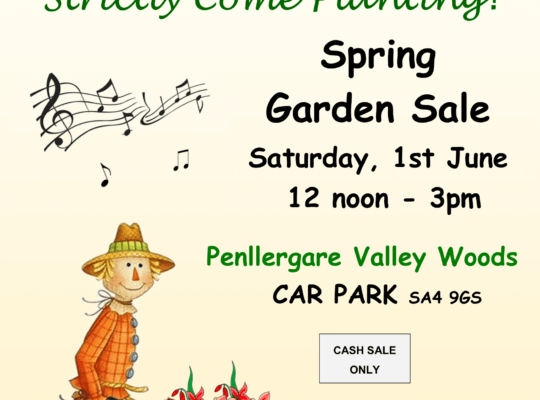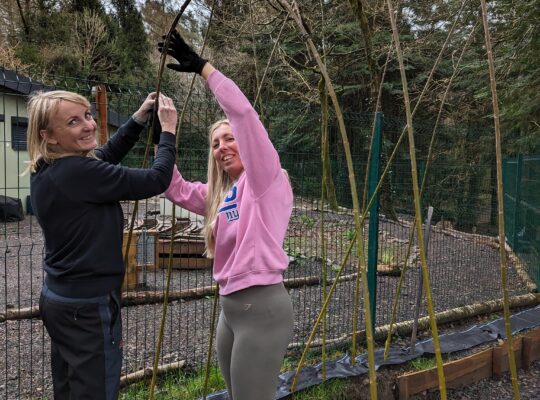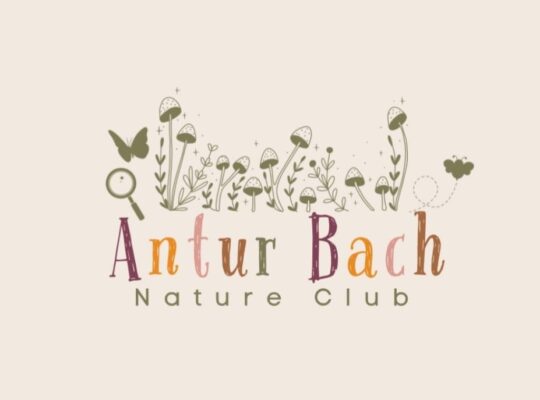Penllergare Water Vole Restoration Project
Exciting project starts to help water vole numbers recover at Penllergare supported by the Landfill Disposals Tax Communities Scheme. See how you can get involved to help this endangered native rodent.
The Trust’s new water vole project at Penllergare Woods has been set up with the aim t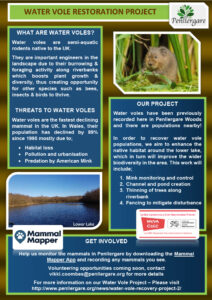 o help the water vole populations recover here, which had previously recorded here back in 2016. The Trust intend to do this by restoring and managing the habitat surrounding the lower lake area to make it more suitable for water vole to live. The project will also positively enhance the environment for a whole host of other native species including invertebrates, birds and bats, increasing overall biodiversity.
o help the water vole populations recover here, which had previously recorded here back in 2016. The Trust intend to do this by restoring and managing the habitat surrounding the lower lake area to make it more suitable for water vole to live. The project will also positively enhance the environment for a whole host of other native species including invertebrates, birds and bats, increasing overall biodiversity.
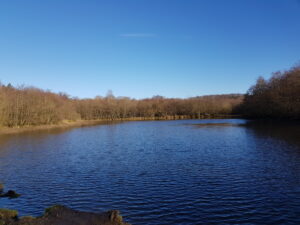
What are water voles?
Water voles (Arvicola amphibious) are native UK rodents. They are semi-aquatic mammals that live along riverbanks comprising of dense vegetation such as grasses, reeds, rushes and sedges, which provide both food and shelter. They prefer slow flowing water so are often found in small streams, ponds and ditches as opposed to the main river channel.
Water voles are generally herbivorous and their diet can consist of over 200 different plant species. They are considered ecosystem engineers, as their foraging and burrowing activities promote soil nutrients such as nitrogen which is essential for plant growth.
The water vole is fully protected under the Wildlife and Countryside Act 1981 (schedule 5). It is an offence to intentionally or recklessly damage, kill, capture or injure and intentionally or recklessly disturb, obstruct, damage or destroy their burrows. They are also designated as a priority species under the UK Post-2010 Biodiversity Framework.
Why do they need our help?
Water voles are the fastest declining mammal in the UK and are considered critically endangered in Wales. In the early 1900’s UK populations were estimated at around 8 million, whereas now there are thought to be approximately 130,000. The species is threatened by several factors including habitat loss, pollution and urbanisation, in addition to being the main prey species of the invasive American mink (Neovison vison).
What is involved in the project?
1. Mink control & monitoring – We have recently created and deployed two mink rafts in the lower lake area. These contain clay pads which allow us to identify mink tracks regularly.
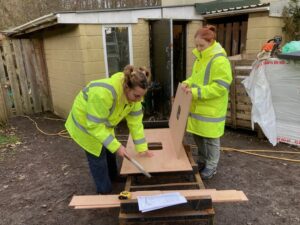
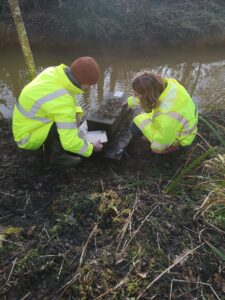
2. Creation of new water courses – A complex system of ditches and ponds containing earth banks and slow-moving water provides suitable habitat for water voles, as well as promoting colonisation. We plan to carry out this work in the next few months once habitat conditions are more suitable.
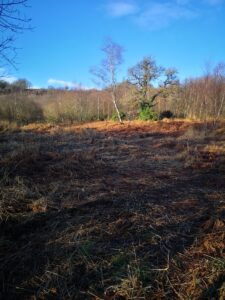
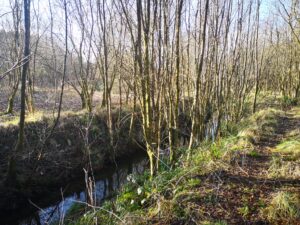
3. Thinning of trees along the riverbank – This will allow more sunlight to the area which encourages plant growth, increasing food and shelter for water voles. This work is planned to commence at the end of summer after the bird breeding season has finished.
4. Introduction of fencing – Studies have shown water vole populations are significantly higher in fenced areas compared to non-fenced areas as frequent disturbances can negatively impact feeding behaviours. Therefore, whilst some of the lower lake area is naturally protected by thick vegetation, additional areas are planned to be fenced off to restrict access.
Get involved
If you would like to get involved in the water vole project, please contact [email protected] for more information.
Also, if you would like to help us monitor species here at Penllergare Woods, download the free Mammal Mapper app https://www.mammal.org.uk/volunteering/mammal-mapper/ and record any mammals you see.
Taking the time to do this is greatly appreciated as it helps to understand the distribution and abundance of mammals in the local area, in addition to contributing to scientific research and mammal conservation on a national scale. So go on and get involved!
(Featured Image – Water Vole by Peter Trimming)
